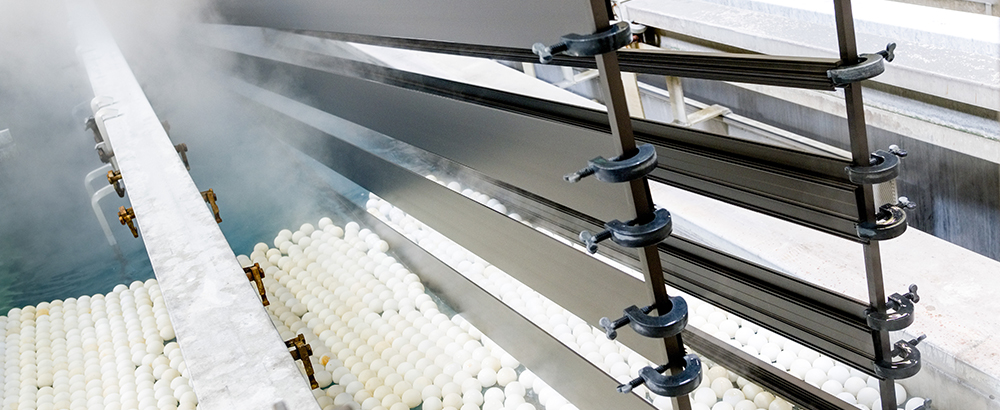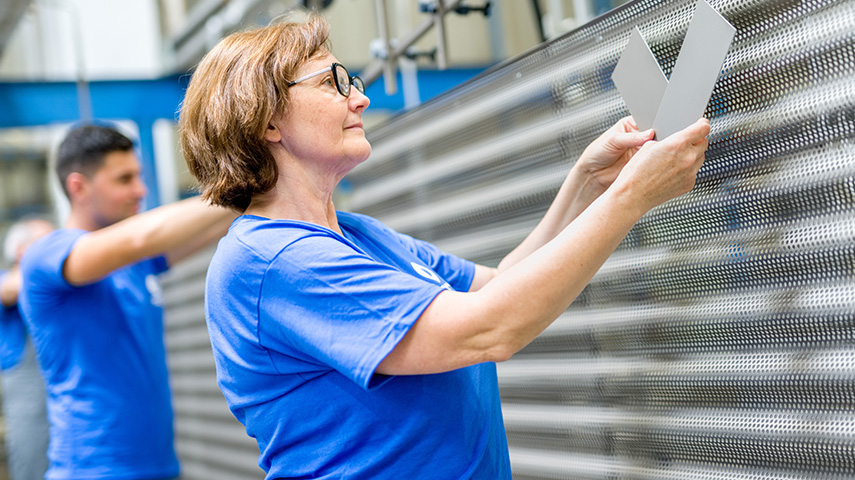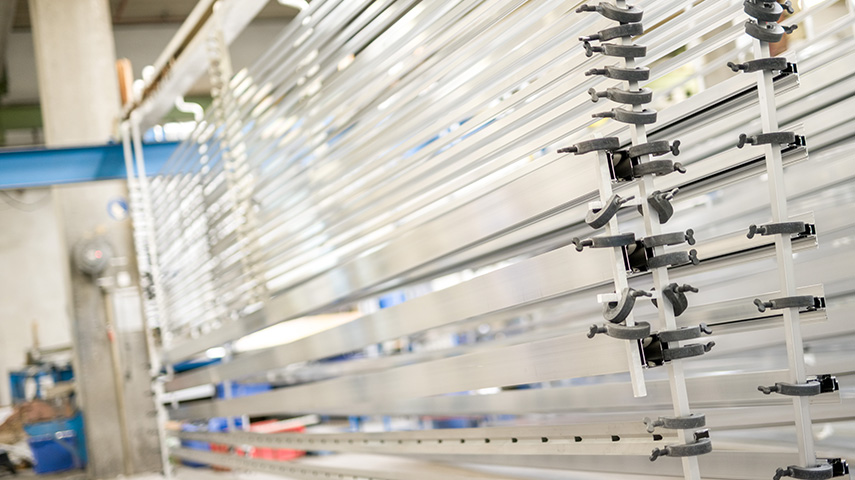The anodising process at a glance
In the anodising process, an electro-mechanical approach is used to give the aluminium a coatable protective layer which protects the metal against corrosion.

In the anodising process, an electro-mechanical approach is used to give the aluminium a coatable protective layer which protects the metal against corrosion.
Aluminium is an important and versatile lightweight metal which forms a natural, wafer-thin oxide layer in dry air to protect the aluminium against further corrosion. In a moist atmosphere, this layer becomes increasingly thicker with a light to dark grey appearance due to soiling and oxide inclusions; this means that it is not particularly attractive. This natural protection is only effective in the pH range 5–8.
All acids and alkalis outside this pH value continuously attack the aluminium. The anodising process creates this protective layer electro-chemically. Thicknesses of a few μm up to more than 25 μm can be implemented in this way. Using electricity and an electrolyte, the outermost aluminium layer of the base material is converted into aluminium oxide. This means that alloys with a high foreign metal content cannot be decoratively anodised, or that restrictions apply. The purer the aluminium, the more homogeneous the anodised layer. Decorative anodised qualities have very tight tolerance ranges for alloy components in order to achieve the most consistent surface quality possible. We work with what we refer to as the GS process (=direct current/sulphuric acid). Constant cooling of the process baths and strict monitoring of the chemical parameters result in oxide layers of 5 to approx. 25 μm and of the highest quality on the product, depending on the customer's requirements. These thickness classes are best suited for decorative and architectural applications.
The finely-pored oxide layer is colourless and transparent and can be dyed later on by depositing metal salts or dyes in the pores. Dyeing is simply omitted for colourless anodised goods. During sealing, which is the final step in the anodising process, what can be up to 100,000 pores per cm² are compacted. The soft and spongy oxide layer is converted into boehmite via hydration in fully demineralised, boiling water (at least 98 °C). This seals the pores. The anodised layer is now extremely hard and resilient for decades. Sealing the pores in which the coating material was deposited before sealing makes the coloured anodised layer lightfast and UV-resistant. However, this only applies for bronze and gold hues. Other colours such as red, blue, etc. are not lightfast and can bleed
Thanks to our decades of experience, we are capable of anodising the largest installation depths and geometrically complex components to the highest quality standards. Strict monitoring of our process baths, excellent bath circulation and the excellent training of our employees mean that you can implement any project with us – no matter how challenging.

